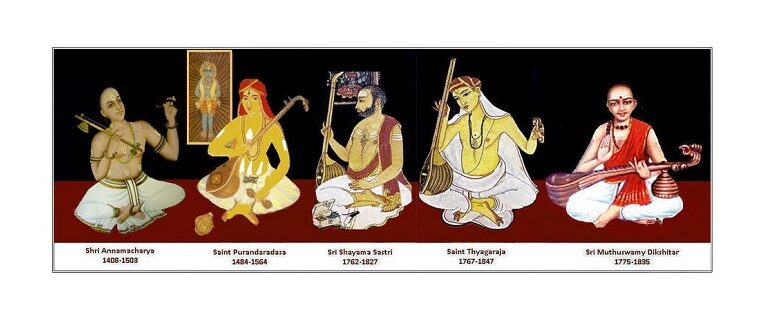The Evolution of Tamil Music: From Silappathikaram to PeriyaMelam

Tamil Nadu, a land steeped in history and culture, boasts a rich musical heritage that has been evolving for centuries. The roots of Tamil music can be traced back to the ancient Tamil epic, Silappathikaram, where we find one of the earliest mentions of Tamil Isai (Tamil music). This article delves into the fascinating journey of Tamil music, exploring its evolution from its origins in Silappathikaram to the emergence of PeriyaMelam, a tradition closely connected to Carnatic music.

Silappathikaram, a Tamil epic, serves as a pivotal point in the history of Tamil music. It emerges from the intricate fusion of Iyal (music) and Natya (dance-drama), shaping a distinct language for music. Over time, this language gained grammatical structure and was reimagined as an aid to drama rather than a mere accompaniment to other performative arts.
A key milestone in the evolution of Tamil music occurred when the Pandyas, patrons of traditional art, established a structured order for music and drama. They introduced 103 ragas, and this marked the birth of “Pann Isai,” where “Pann” signifies color or flavor, representing a raga’s unique mood. With these 103 ragas, bards and poets of the Sangam era composed an impressive 1,003 songs. Remarkably, only 22 of these compositions have survived the test of time.

The Sangam era was a period of confluence, symbolizing the harmonious merging of music and dance or drama, vocal and instrumental music, and conventional and progressive practices. While string instruments continued to evolve, the focus gradually shifted to percussion instruments like the Mann Parai, a clay drum still used by tribes today. This mud drum, in fact, served as the inspiration for the Mirdangam, a popular accompaniment for modern music performances.
Before the nadaswaram and the flute gained prominence, musicians explored wind instruments like the tumbu. Bamboo plants with naturally occurring holes produced melodious sounds when blown into, resembling the technique used with a flute. Surprisingly, this ancient instrument is still preserved by tribes in Krishnagiri and Dharmapuri, who play it during auspicious occasions and temple festivals.

The nadaswaram eventually became a central instrument in Tamil culture, contributing significantly to PeriyaMelam music, closely associated with South Indian classical music. During the 13th century, PeriyaMelam musicians offered their musical services to Hindu temples. This tradition, akin to Carnatic music, encompasses various elements, including the nadaswaram, Thavil (a percussion instrument), Thalam (a rhythmic pattern), and an instrument to set the musical scale.

Cultural anthropologist PathmanesanSanmugeswaran, in his conference paper “Exploring the Elements of Ethnomusicology in PeriyaMēlam Music in Tamil Culture,” sheds light on the intricate components of PeriyaMelam music. This tradition has deep historical roots and continues to thrive, providing a vibrant and essential aspect of Tamil musical heritage.

Tamil music has journeyed through the ages, starting from its nascent stages in Silappathikaram and evolving into the structured and diverse forms we see today. Its resilience and adaptability have allowed it to transcend generations, preserving its cultural significance and enchanting audiences around the world. As we celebrate this rich musical legacy, it’s essential to acknowledge the contributions of the diverse communities that have shaped and nurtured Tamil music throughout its remarkable history.
News Mania Desk / Agnibeena Ghosh 7th September 2023






